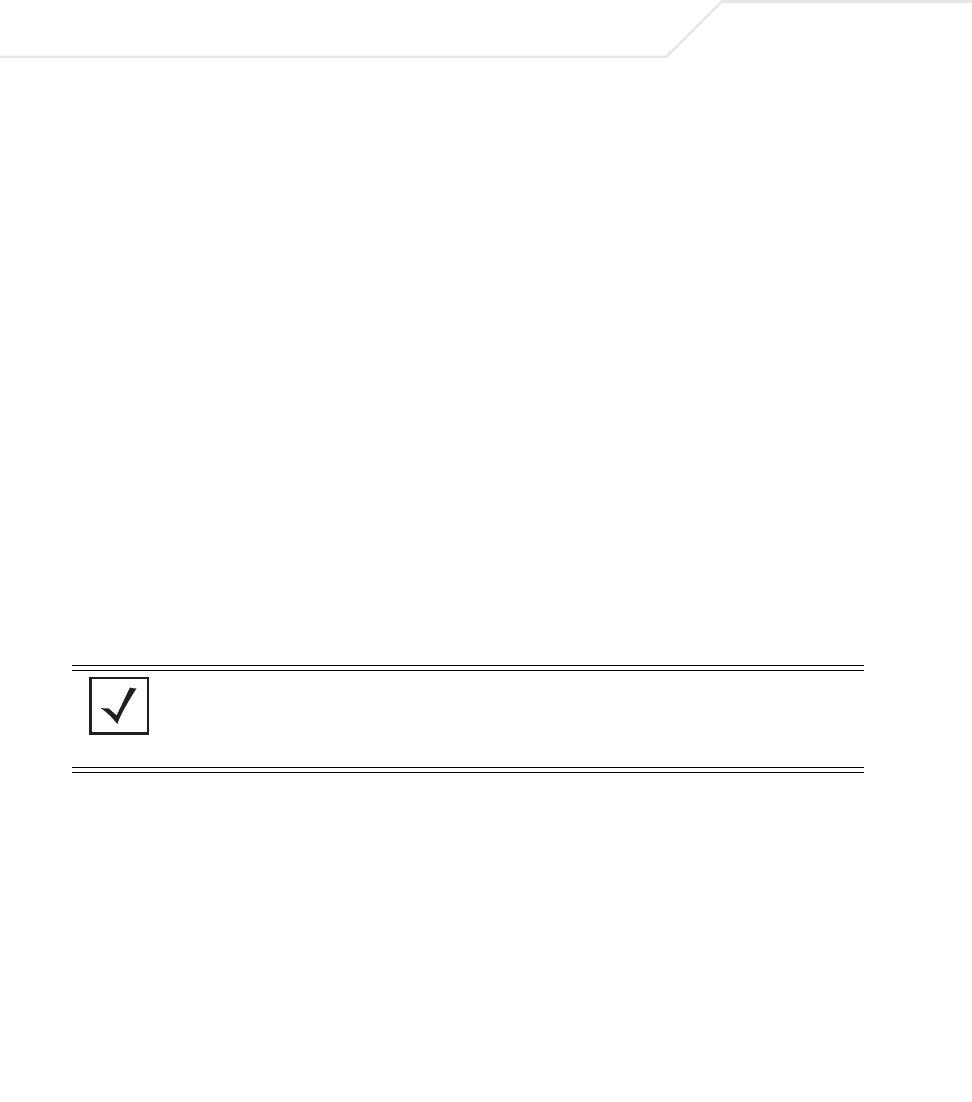User Manual Part 3
Table Of Contents
- Introduction
- 1.1 New Features
- 1.2 Feature Overview
- 1.2.1 Single or Dual Mode Radio Options
- 1.2.2 Separate LAN and WAN Ports
- 1.2.3 Multiple Mounting Options
- 1.2.4 Antenna Support for 2.4 GHz and 5.2 GHz Radios
- 1.2.5 Sixteen Configurable WLANs
- 1.2.6 Support for 4 BSSIDs per Radio
- 1.2.7 Quality of Service (QoS) Support
- 1.2.8 Industry Leading Data Security
- 1.2.9 VLAN Support
- 1.2.10 Multiple Management Accessibility Options
- 1.2.11 Updatable Firmware
- 1.2.12 Programmable SNMP v1/v2/v3 Trap Support
- 1.2.13 Power-over-Ethernet Support
- 1.2.14 MU-MU Transmission Disallow
- 1.2.15 Voice Prioritization
- 1.2.16 Support for CAM and PSP MUs
- 1.2.17 Statistical Displays
- 1.2.18 Transmit Power Control
- 1.2.19 Advanced Event Logging Capability
- 1.2.20 Configuration File Import/Export Functionality
- 1.2.21 Default Configuration Restoration
- 1.2.22 DHCP Support
- 1.2.23 Multi-Function LEDs
- 1.3 Theory of Operations
- Hardware Installation
- Getting Started
- System Configuration
- Network Management
- Configuring Access Point Security
- 6.1 Configuring Security Options
- 6.2 Setting Passwords
- 6.3 Enabling Authentication and Encryption Schemes
- 6.4 Configuring Kerberos Authentication
- 6.5 Configuring 802.1x EAP Authentication
- 6.6 Configuring WEP Encryption
- 6.7 Configuring KeyGuard Encryption
- 6.8 Configuring WPA Using TKIP
- 6.9 Configuring WPA2-CCMP (802.11i)
- 6.10 Configuring Firewall Settings
- 6.11 Configuring VPN Tunnels
- 6.12 Configuring Content Filtering Settings
- 6.13 Configuring Rogue AP Detection
- 6.14 Configuring User Authentication
- Monitoring Statistics
- Command Line Interface Reference
- Configuring Mesh Networking
- Technical Specifications
- Usage Scenarios
- Customer Support
- Index

AP-51xx Access Point Product Reference Guide
B-4
To configure Global options using extended/standard options:
1. Set the Windows DHCP Server and access point on the same Ethernet segment.
2. Configure the Windows based DHCP Server as follows:
a. Highlight the Server Domain Name (for example, apfw.symbol.com). From the Action
menu, select Set Predefined Options.
b. Add the following 3 new options under DHCP Standard Options class:
c. Highlight Scope Options and select Configure Options.
d. Under the General tab, check all 3 options mentioned within the Extended Options table
and enter a value for each option.
3. Copy both the firmware and configuration files to the appropriate directory on the TFTP
Server.
4. Restart the access point.
5. While the access point boots up, verify the access point:
• Obtains and applies the expected IP Address from the DHCP Server
• Downloads the firmware and configuration files from the TFTP Server and updates both
as required.
Extended Options Code Data type
Access point TFTP Server IP Address
(Note: Use any one option)
181
186
IP address
String
Access Point Firmware File Name 187 String
Access Point Config File Name
(Note: Use any one option)
129
188
String
String
Standard Options Code Data type
Access point TFTP Server IP Address 66 String
Access point Firmware File Name 67 String
NOTE If using Standard Options and the configuration of the access point needs
to be changed, use option 129 or 188 as specified in Extended Options
table. Standard options 66 and 67 are already present in the DHCP
Standard Options Class by default.










